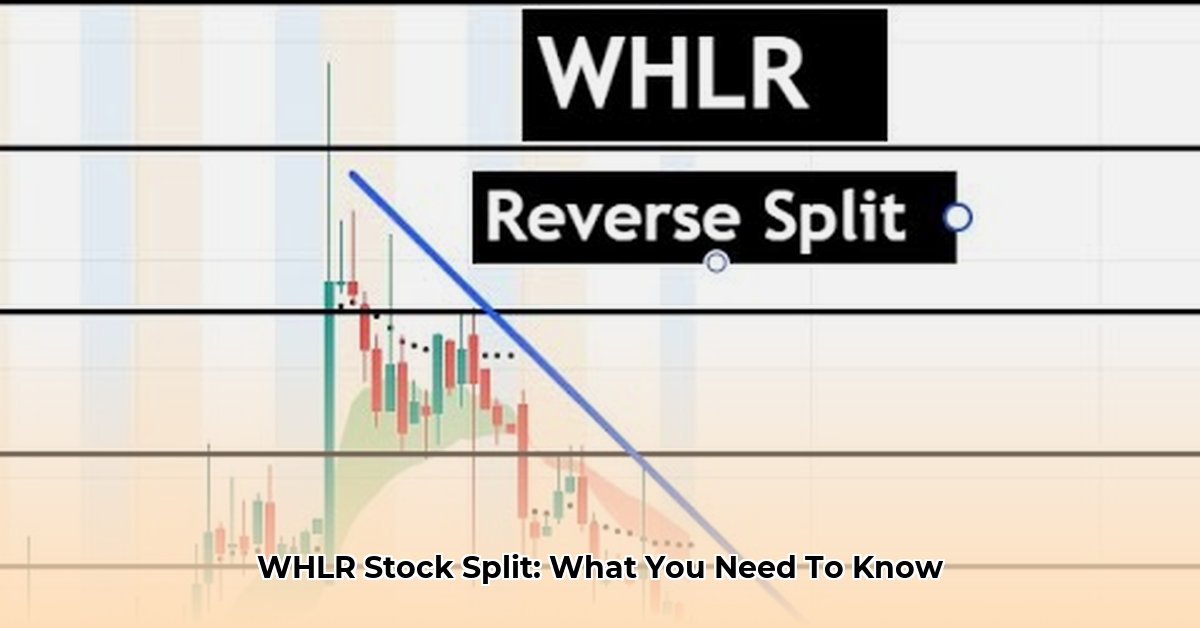
This article explains the recent WHLR stock split, its implications for investors, and actionable steps to navigate this situation. We will examine the reasons behind the split, its effects on different stakeholders, and provide a risk assessment to help you make informed decisions.
Understanding the WHLR Reverse Stock Split
Wheeler Real Estate Investment Trust (WHLR) executed a 1-for-10 reverse stock split on August 17th, 2023. This means that for every 10 shares previously held, shareholders now own one. This action aimed to increase WHLR's share price above the minimum required by the Nasdaq Stock Market, preventing potential delisting. Fractional shares (shares representing less than a whole share) were likely paid out in cash.
Why the split? WHLR's share price had fallen below Nasdaq's minimum listing requirement. A reverse split is a common, albeit sometimes controversial, tactic to artificially boost the share price. It's important to remember this action addresses a symptom (low share price), not the underlying cause (potentially weak financial performance).
Did the split magically fix WHLR's problems? No. The company's long-term financial health is still paramount. The reverse split merely alters the appearance of the investment, not its intrinsic value. A higher share price doesn't guarantee success.
Impact on Different Stakeholders
The consequences of the WHLR reverse stock split vary across different groups:
Existing Shareholders: Your ownership percentage remains largely unchanged, excluding minor variations due to fractional share payouts. However, the value of your investment isn't guaranteed to increase. The ultimate outcome depends on WHLR's future performance.
Potential Investors: Don't let the inflated share price alone influence your decision. Instead, thoroughly analyze WHLR's financials, growth prospects, and competitive landscape. Focus on the fundamentals, not the cosmetic changes resulting from the stock split. Is the company's business model sustainable and profitable?
Nasdaq: The exchange is monitoring WHLR closely. While the reverse split addresses the immediate delisting threat, sustained financial improvement is crucial for continued compliance.
WHLR Management: The split puts immense pressure on the company's leadership. They must demonstrate strong financial performance, attract new investors, and prove the split was a strategic, not desperate, move.
Risk Assessment Matrix
Understanding the risks associated with the WHLR reverse stock split is vital:
| Risk Category | Likelihood | Potential Impact | Mitigation Strategies |
|---|---|---|---|
| Failure to meet Nasdaq standards | Moderate | Significant | Consistent financial improvement; proactive communication with Nasdaq. |
| Negative investor response | Moderate | Moderate | Transparency; clear communication of long-term growth strategy. |
| No real increase in shareholder value | Low | Moderate | Focus on sustainable growth; effective and accountable management. |
| Problems with fractional share payouts | Low | Low | Efficient payout processes; open communication with shareholders. |
Actionable Steps for Investors
The reverse split is just one step in WHLR's journey. Its future success hinges on its ability to deliver on its promises and navigate the competitive real estate market. Here's what investors should do:
- Monitor the Share Price: Track WHLR's share price trends after the split. Look for long-term patterns, not just daily fluctuations.
- Analyze the Fundamentals: Examine key financial indicators like revenue growth, profitability, and occupancy rates (if applicable). Assess the company's performance against its past performance and competitors.
- Evaluate Long-Term Potential: Does WHLR's business model align with your investment goals and risk tolerance? This should be your primary focus, regardless of the share price.
- Stay Informed: Stay abreast of company announcements, financial news, and industry analysis. Knowledge is power, especially in dynamic markets.
Remember, past performance does not guarantee future success. Thorough research is crucial before making any investment decisions. The question remains: Can WHLR's management execute its strategy effectively? Only time will tell.